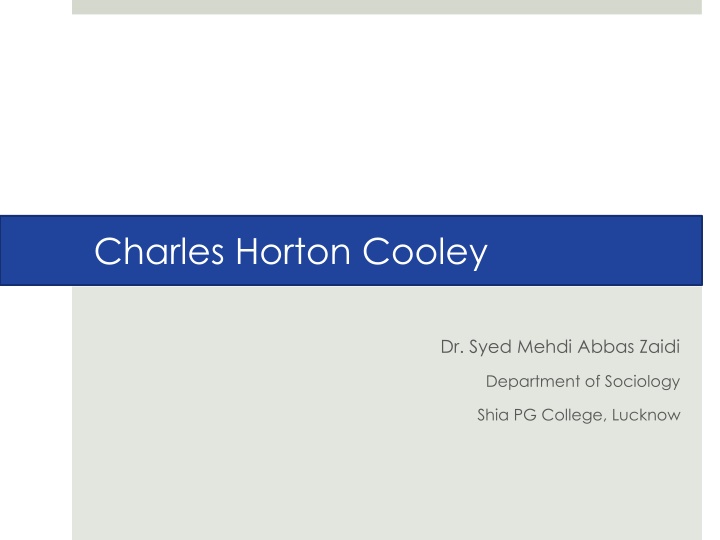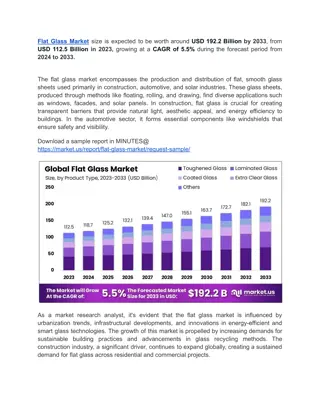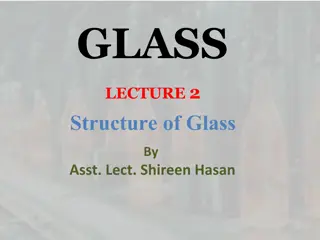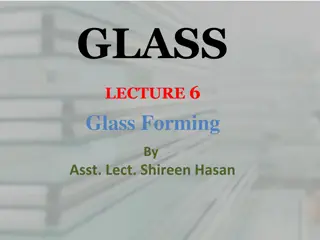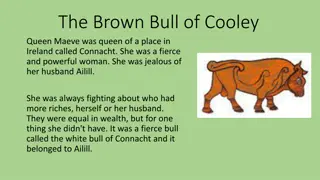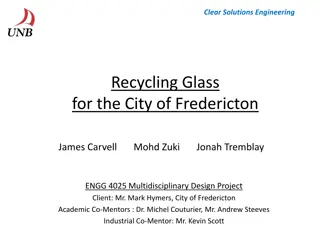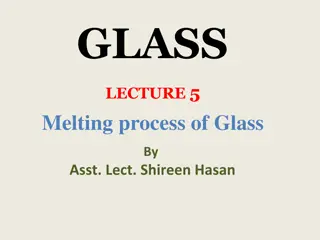Charles Horton Cooley - Sociologist and Creator of the Looking Glass Self
Charles Horton Cooley, an American sociologist associated with the University of Michigan, is best known for his concept of the looking-glass self. Cooley's major works span topics like social change, human nature, and social consciousness. His Looking Glass Self theory explores how individuals form their self-concept through social interactions. This concept involves three key steps of self-imagination and perception by others. Cooley's work continues to be influential in the fields of psychology and sociology.
Download Presentation

Please find below an Image/Link to download the presentation.
The content on the website is provided AS IS for your information and personal use only. It may not be sold, licensed, or shared on other websites without obtaining consent from the author.If you encounter any issues during the download, it is possible that the publisher has removed the file from their server.
You are allowed to download the files provided on this website for personal or commercial use, subject to the condition that they are used lawfully. All files are the property of their respective owners.
The content on the website is provided AS IS for your information and personal use only. It may not be sold, licensed, or shared on other websites without obtaining consent from the author.
E N D
Presentation Transcript
Charles Horton Cooley Dr. Syed Mehdi Abbas Zaidi Department of Sociology Shia PG College, Lucknow
Charles Horton Cooley (August 17, 1864 May 7, 1929) American Sociologist, mainly associated with the University of Michigan where he studied and taught Economics and Sociology. He was the founding member of the American Sociological Association in 1905. Best known for his concept of looking-glass self .
Some of Cooleys Works 1897: Genius, Fame and the Comparison of Races 1897: The Process of Social Change 1902: Human Nature and the Social Order 1907: Social Consciousness 1908: A Study of the Early Use of Self-Words by a Child 1909: Social Organization: a Study of the Larger Mind 1917: Social Control in International Relations 1929: The Life-Study Method as Applied to Rural Social Research 1930: Sociological Theory and Social Research, New York: Henry Holt
Looking Glass Self The Looking-glass self is a social psychological concept, fashioned by Charles Horton Cooley in 1932. This concept of the looking glass-self is without a doubt is his most renowned, and is known and accepted by most psychologists and sociologists today. The term looking glass self was first used by Cooley in his work, Human Nature and the Social Order in 1902.
Steps of Looking Glass Self As per C.H. Cooley (1902), in his work Human Nature and the Social Order, his Looking-Glass Self involves three steps: 1. Self imagination of how you appear to the other person. 2. Imagination of the judgment of the other person. 3. You feel some sense of happiness, pride, guilt, or of shame.
Concept of Self The self is the subject of one s own experience of phenomena: perception, emotions, thoughts, etc. Definition of one s identity, character, abilities, and attitudes, especially in relation to persons of things out side itself or oneself.
Example of Self The real Alice, known only to her maker. Her idea of herself I [Alice] look well in this hat Her idea of Angela s idea of her Angela thinks I look well in this hat Her Idea of what Angela thinks she thinks of herself Angela thinks I am proud of my looks in this hat Angela s idea of what Alice thinks of herself Alice thinks she looks stunning in that hat
Self Concept Self concept, self-construction, self-identity or self-perspective is a collection of beliefs about oneself. It includes elements such a academic performance, gender roles an racial identity. Generally, the concept of self contains the answer to the question Who am I?
Self Knowledge Philosophically, Self-knowledge commonly refers to the knowledge of one s particular mental state that include one s beliefs and desires. Self- knowledge is a term that we use to describe the information that an individual draws upon when finding an answer to the question What am I like?
Self Esteem Self esteem refers to having esteem in one s own self (It includes having self confidence and the feeling of good about oneself.) In simple terms, a confidence and satisfaction in oneself.
Social Self Social Self is a part of self that engages face to face, in relation to others. Social self can include gender, place of residence, age, or any other categorization that helps to characterize a person identity.
Concept of Society Society is an interweaving and interworking of mental selves. He imagine your mind and especially what your mind thinks about his mind. He dress his mind before yours and expect that you will dress yours before his. Whoever cannot or will not perform these feats is not properly in the game.
Concept of Primary Group Emphasis on the wholeness of social life led Cooley to focus his analysis on those human groupings that he conceived to be primary in linking man with his society. By primary group he mean those characterized by intimate face-to-face cooperation and association. However, he himself never used the term secondary group. In this concept men may be related to one another through formal relationships.
Reference Books 1. Sociological Theory and Social Research, Cooley, Charles Horton, Kelley (Augustus M.), Publishers, US 2. Cooley Charles Horton: Imagining Social Reality, Glenn Jacobs, University of Massachusetts Press 3. Looking Glass Self, Charles Horton Cooley, Daniel Sharp Editor, Wall Flower Books 4. Updating Charles H. Cooley Contemporary Perspectives on a sociological Classic, Edited by Natalia Ruiz- Junco and Baptize Brossard, Publisher- Rout ledge
